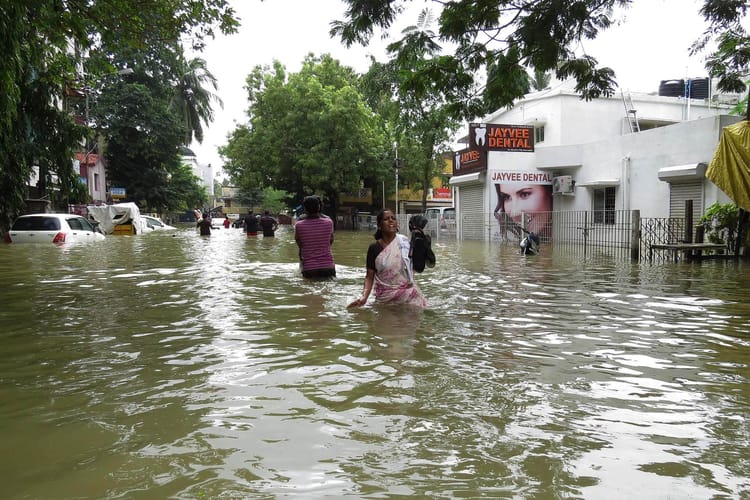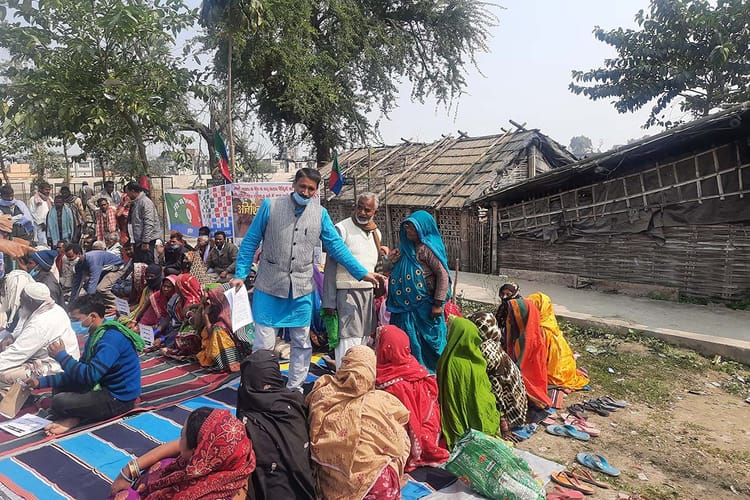India’s desert water system at a crossroads

In the heart of the Thar Desert lies Bada Bagh, or the ‘great garden’, where khadeen, a centuries-old feat of water engineering has sustained agriculture for generations. But a shift from tradition to a market-driven approach threatens the sustainability of this system. Pierantonio La Vena and Bhatta Ram write about the modern pressures on this ancient desert water management system.
Bada Bagh – which translates as ‘great garden’ – is a valley of lush orchards in the heart of the Thar Desert in Rajasthan, a northwestern state in India. These orchards near Jaisalmer city flourish because of a five-century-old system known as khadeen. This system has been key to successful agricultural practices in this region where water is a precious and rare commodity.
Since Independence, and the abolition of royal titles in India, the former royal family manages their properties indirectly through the Girdhar Smarak Dharmarth Nyas Trust. These properties include traditional water structures, such as the khadeen in Bada Bagh.
However, the functioning of the khadeen in Bada Bagh is under threat today, due to the boom of other economic sectors, such as mining and tourism, as well as more market-oriented management approaches. Nonetheless, it is necessary to understand this structure better, not only to protect it for heritage reasons, but also for how it harbours resilient water practices in a desertic region.
Cultivating the bed of a seasonal lake
The stone embankment of the khadeen in Bada Bagh stops the seasonal runoff within the watershed, creating a lake during the monsoon season that lasts from July to September. During the Hindu festival of Raksha Bandhan in August, the water level is assessed to decide which crops should be cultivated.
“If the rainfall is abundant, wheat, mustard and chickpeas can be grown, otherwise we grow only chickpeas,'' says a farmer.
Since the last couple of years, on the same day as the water level is assessed, the descendants of the former royal family of Jaisalmer – locally referred to as durbar – open a yearly tender for the right to cultivate the lakebed. Additionally, the winner of the tender obtains the rights to sell water from a narrow well located downstream from the lake’s embankment.
By October, after the lake has been drained through a shaft, the lakebed, saturated with moisture, is ready to be cultivated in the winter season of October to March, without any irrigation. As most khadeens, Bada Bagh khadeen is located above an impenetrable geologic layer, constituting what hydrogeologists call a perched aquifer. Simply put, this means that the water collected in the khadeen does not come into contact with the saline water of the deeper aquifer.



From left to right: the drainage canal in Bada Bagh; diesel motors are used to lift water from wells, though traditional lifting using animals is also practiced; a leather bag – known locally as chara – used in traditional lift irrigation hangs from a tree fork. Photos: Pierantonio La Vena
Irrigating the downstream orchards
In the valley downstream from the khadeen are a number of orchards (wadi) where vegetables, fruits and cereals are cultivated. While the cultivation of crops in the lakebed happens without irrigation, diesel motors are used to lift water from narrow wells – locally known as beri – to irrigate the wadis. In a few wells water is lifted the traditional way in leather bags, using animal power. Different wells yield considerably different amounts of water depending on their location.
The durbar owns the largest and lushest wadi, dotted with centennial mango trees, and echoing with the calls of peacocks. Traditionally, community members take care of this wadi. Considering that this allotment is located right next to the embankment, and that it receives the water drained from the lake, it happens to be the one with the easiest access to water.

Pressures on the system and communities
Most labour practices connected to the khadeen are carried out by people living in a village on the valley’s margins, mostly from the Mali caste, whose traditional occupation is gardening and orchard-farming. Laying of roads is a threat to the water catchment area, as it diminishes the availability of water. Paired with the growing demand for groundwater, exacerbated by water sales and land fragmentation, this has instilled a sense of insecurity and indignation among the members of the Mali community.
When it comes to issues of shared interest for those who farm in Bada Bagh, decisions are meant to be taken collectively, through community processes. However, the difference of power amongst community members plays a role in the direction of local politics. And in this case, water access seems to correlate with decisional power.
One example in this regard concerns the sale of water. Although most villagers do not sell water, committing instead to reinvesting groundwater in the orchards, a few continue to sell water from their wells. In fact, owners of high-yielding wells are most likely to cave under the pressure of the water market, and sell water to nearby hotels for good economic profits. In this shift towards the commodification of water, local communities are exposed to new vulnerabilities, and might face the risk of losing the very sources of their livelihood. Groups of poorer farmers might risk being excluded not only from key decision-making processes, but also from access to irrigated land.

Impact of shift from tradition
Traditionally, community members cultivated the khadeen’s lakebed under sharecropping, and handed over one third of the yield to the durbar. However, since the recent introduction of the tendering system, the payment has to be made in advance in cash. This means that the khadeen is not cultivated by community members anymore, and that the complex network of socio-ecological relations that connect the khadeen with the orchards downstream risks being undermined. For the current growth cycle of 2023-2024, the tender’s winner has paid INR 6 lakh (roughly EUR 6,800).
This shift in governance models has had an effect on the kind of seeds in use on the khadeen. The winner of this year’s tender says, “Earlier we used to save khadeen seeds, but now we purchase seeds from the market because we do not know whether we will get the khadeen contract next year; so we do not take the risk.”
Because of the highly fertile silts carried into the khadeen by rainwater, chemical fertilisers are not used here. However, their use is not uncommon in the orchards downstream, with negative impacts on sales, as organic produce fetches much higher prices.
Bada Bagh stands at a crossroads, balancing tradition and modernity in its quest for sustainable water practices. The delicate dance between the ancient khadeen systems and contemporary water management poses challenges and opportunities for agricultural resilience in the Thar Desert.






Member discussion